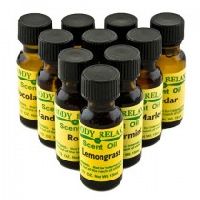
scented oils
BMV Fragrances is one of the largest producers of Essential Oils including Natural Essential Oils, Bases and Reconstitutions Essential Oils and Aromatherapy Oils. We supply 100% pure essential oils in wholesale as Fragrance Oil, Perfume Oil, Aromatherapy Oil, Reconstitution Oil and Specialties to different industries. Our top quality product range have made us approved supplier, manufacturer, wholesaler of organic essential oils. At present we supply wholesale essential oils for aromatherapy, natural perfumes, cosmetics, soaps & shampoos. We continuously refine the product development process and methodologies to produce quality Essential oils, perfume oils and fragrance oil. We know our client's needs better for essential oils and constantly strive to meet their expectations. We welcome your requirements of 100% natural, pure & organic essential oils, perfume oils and fragrance oils.
...more
Saffron Extract
Botanical Name Crocus sativus L Product Code SAF0144P Category 100% Pure & Natural Method of Production Solvent Extraction (Diluted in PG) Color and Appearance Typical Saffronic colour , mobile liquid
...more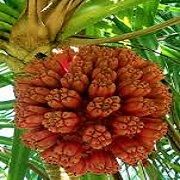
Kewra Perfume
Keora Plant (Pandanus odoratissimus)The Kewra plant grows wild along the east coast of India. The plants producing the best floral bouquet are grown in Ganjam district of South Orrisa.It should be noted that Rampe plant (Pandanus amaryllifolius Roxb) is different from Kewra plant. The fragrant leaves of Rampe plant (Pandan Patta) are used to flavor rice and curries.Kewra plant is dioecious, with male and female flowers produced on different plants. In Sanskrit, the plant is called Ketaki. The male plants are called 'Ketaki Viphala', and the female plants and called 'Swarana Ketaki'.The male plant - flower Only the flowers of the male plant are harvested to extract the floral bouquet to produce Kewra. The flower bouquet is sweet similar to rose flowers, and fruity. The Kewra plant grows up to 18 feet tall. The plants flower three times a year (Summer, Monsoon, and Winter). 60% of the flowers grow during monsoon season (July-September), and posses the best floral bouquet. 30% of the flowers grow during summer (May-June), and remaining 10% grow during winter (October-November).
...more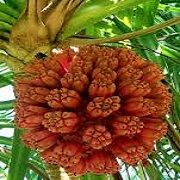
Kewra Fragrance
Keora Plant (Pandanus odoratissimus)The Kewra plant grows wild along the east coast of India. The plants producing the best floral bouquet are grown in Ganjam district of South Orrisa.It should be noted that Rampe plant (Pandanus amaryllifolius Roxb) is different from Kewra plant. The fragrant leaves of Rampe plant (Pandan Patta) are used to flavor rice and curries.Kewra plant is dioecious, with male and female flowers produced on different plants.
...more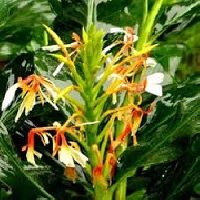
Ginger Lily Oil
Hedychium Coronarium is a plant species native to Himalayas region of Nepal and India, Myanmar and Thailand. Hedychium spicatum smallish hardy perennial that grows to around 1 m, with green leaves and large orange and white flowers. Hedychium spicatum smallish hardy perennial that grows to around 1 m, with green leaves and large orange and white flowers. It is also known as Spiked Ginger Lily, Sandharlika or Kapur kachri in Hindi, and Takhellei in Manipuri. The smell is really wonderful! The oil is extracted from dried roots. Has a very tenacious and sweet smell ideal for a male perfume. The aroma is a blend of warm woody notes with a soft hint of spice, and a touch of soft floral.
...more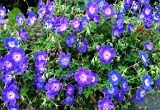
geranium
Geranium is a genus of 422 species of flowering annual, biennial, and perennial plants that are commonly known as the cranesbills. They are found throughout the temperate regions of the world and the mountains of the tropics, but mostly in the eastern part of the Mediterranean region. The long, palmately cleft leaves are broadly circular in form.The flowers have five petals and are coloured white, pink, purple or blue, often with distinctive veining. Geraniums will grow in any soil as long as it is not waterlogged. Propagation is by semiripe cuttings in summer, by seed, or by division in autumn or spring.Confusingly, "geranium" is also the common name of members of the genus Pelargonium (sometimes known as 'storksbill'), which are also in the Geraniaceae family.These are generally half-hardy plants which are either grown from seed every year, or offered as bedding in spring and discarded after flowering. Linnaeus originally included all the species in one genus, Geranium, but they were later separated into two genera by Charles L’Héritier in 1789. Other former members of the genus are now classified in genus Erodium, including the plants known as filarees in North America.The term "hardy geranium" is often applied to geraniums to distinguish them from the pelargoniums.However, not all geranium species are winter-hardy.The shape of the flowers offers one way of distinguishing between the two genera Geranium and Pelargonium. Geranium flowers have five very similar petals, and are thus radially symmetrical (actinomorphic), whereas pelargonium flowers have two upper petals which are different from the three lower petals, so the flowers have a single plane of symmetry (zygomorphic).Scientists from the Helmholtz Zentrum Munchen, Germany have found that South African geranium plant extracts represent a potential new class of anti-HIV-1 agents for the treatment of AIDS.Geranium oil can be used to help in the treatment of acne, bruises, burns, cuts, dermatitis, eczema, hemorrhoids, lice, as a mosquito repellant, ringworm, ulcers, breast engorgement, edema, poor circulation, sore throat, tonsillitis, PMS, menopausal problems, stress and neuralgia.The essential oil prepared from the geranium herb has a pleasant, captivating and long-lasting aroma. Hence, it is widely used as a deodorant for regulating perspiration and purging body odor.One of the Most Important Essential Oil in a perfumers Lab , and nearly all perfumers will have two to three or maybe more types of Geranium in his Lab. One of the best known floralizer and limitless in application and percentage use in a compound. However technically there is only one True Geranium and that is Zdravetz Oil and the other so called Chinese Geranium , Egyptian Geranium etc are from the Pelargonium Family !!!
...more
Frank Incense
Olibanum also known as Frankincense, is an aromatic resin obtained from trees of the genus Boswellia, particularly Boswellia sacra, B. carteri, B. thurifera, B. frereana and B. bhaw-dajiana (Burseraceae). The English word is derived from Old French "franc encens" (i.e., high quality incense) and is used in incense and perfumes.There are four main species of Boswellia that produce true frankincense and resin from each of the four is available in various grades. The grades depend on the time of harvesting. The resin is hand-sorted for quality.Frankincense is mentioned in the Bible as one of the three gifts the wise men gave to the young child Jesus.Frankincense is tapped from the scraggly but hardy trees by slashing the bark, which is called striping, and allowing the exuded resin to bleed out and harden. These hardened resins are called tears. There are several species and varieties of frankincense trees, each producing a slightly different type of resin. Differences in soil and climate create even more diversity of the resin, even within the same species. Boswellia Sacra trees are considered unusual for their ability to grow in environments so unforgiving that they sometimes grow out of solid rock. This growth prevents it from being ripped from the rock during violent storms that frequent this region.This feature is slight or absent in trees grown in rocky soil or gravel. The trees start producing resin when they are about eight to 10 years old.Olibanum is characterized by a balsamic-spicy, slightly lemon, fragrance of incense, with a conifer-like undertone. It is used in the perfume, cosmetic and pharmaceutical industries.The essential oil of frankincense is produced by steam distillation of the tree resin.
...more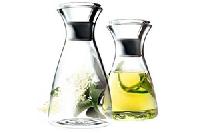
Fragrance Oil
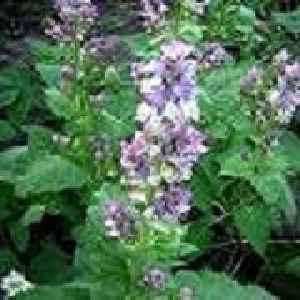
clary sage
CLARY SAGE Salvia sclarea, clary or clary sage is a biennial or short-lived herbaceous perennial in the genus Salvia. It is native to the northern Mediterranean, along with some areas in north Africa and Central Asia.The plant has a lengthy history as a medicinal herb and is currently grown for its essential oil. S. sclarea reaches 3 to 4 ft (0.91 to 1.22 m) in height, with thick square stems that are covered in hairs.The leaves are approximately 1 ft (0.30 m) long at the base, 0.5 ft (0.15 m) long higher on the plant. The upper leaf surface is rugose and covered with glandular hairs.The flowers are in verticils with 2-6 flowers in each verticil and are held in large colorful bracts. That range in color from pale mauve to lilac or white to pink with a pink mark on the edge.The lilac or pale blue corolla is approximately 1 in (2.5 cm) with the lips held wide open. Clary seeds have a mucilaginous coat.Which is why some old herbals recommended placing a seed into the eye of someone with a foreign object in it so that it could adhere to the object and make it easy to remove.This practice is noted by Nicholas Culpeper in his Complete Herbal (1653) who referred to the plant as "clear-eye".The distilled essential oil is used widely in perfumes and as a muscatel flavoring for vermouths wines and liqueurs.It is also used in aromatherapy for relieving anxiety and fear, menstrual-related problems such as PMS and cramping and helping with insomnia.It is used as fragrance components and fixatives in soaps, detergents, cosmetics and perfumes.The oil is used extensively by the food and drink industry. Especially in the production of wines with a muscatel flavor.The young tops of Clary were used in soups and as pot herbs. It gives a new lift to omelets and was used to flavor jellies.The leaves were chopped into salads. Culpeper recommended a 17th century sage dish where the fresh leaves were first dipped in a batter of flour, eggs and a little milk fried in butter and served as a side dish.The flowers have an aromatic flavor and make a lovely contrast in salads. All sage flowers are edible after removing all greenery and stems.The main constituents of the oil are Linalyl Acetate , Linalool and Germacrene.Clary Sage Oil is one of the most important in a perfumers pallete. Excellent blending properties and forms good accords with Citrus and Herbal notes. And at the same time has very useful fixative properties.
...more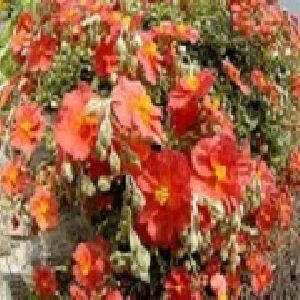
Flowering Plants
Cistus (from the Greek "Kistos") is a genus of flowering plants in the rockrose family Cistaceae, containing about 20 species. They are perennial shrubs found on dry or rocky soils through out the Mediterranean region. From Morocco to Portugal through to the Middle East and also on the Canary Islands.Together with its many hybrids and cultivars is commonly encountered as a garden flower.The common name rockrose is applied to the species.A name also shared by the related genera Halimium.Helianthemum and Tuberaria all in the family Cistaceae.The common name gum cistus is applied to resin bearing species especially C. ladanifer.The leaves are evergreen, opposite, simple, usually slightly rough-surfaced, 2–8 cm long. In few species (notably C. ladanifer) the leaves are coated with a highly aromatic resin called labdanum.They have showy 5-petaled flowers ranging from white to purple and dark pink. In a few species with a conspicuous dark red spot at the base of each petal.They are thermophilous plants. Which require open sunny places. This plant genus is peculiar in that it has developed a range of specific adaptations to resist summer drought and frequent disturbance events such as fire and grazing.In addition it can form both ectomycorrhizas and arbuscular mycorrhizas. More than 200 ectomycorrhiza-forming fungal species belonging to 40 genera have been reported so far to be associated with Cistus.As with many other Cistaceae the species of Cistus have the ability to form mycorrhizal associations with truffles (Tuber) and are thus able to thrive on poor sandy soils or rocks. Cistus ladanifer has been found to have mycorrhizal associations with Boletus edulis, Boletus rhodoxanthus, and Laccaria laccata.Cistus are the only host of Cytinus hypocistis a small parasitic plant that lives on the roots and is noticeable only for a short period of time when in flower. The presence of the parasite does not seem to hurt the host population.Cistus species are used as food plants by the larvae of some Lepidoptera species including Coleophora confluella and Coleophora helianthemella, the latter recorded on Cistus monspeliensis.Various Cistus species are known to emit volatile oils rendering the plants flammable. Some sources state that under dry, hot conditions these species may be capable of self-ignition.In popular medicine, infusions of cistuses are used to treat diarrhea.Its soft and fruity aroma is calming and releasing.Cistus essential oil is spiritual oil and has been used for centuries for meditation. It opens the third eye and oxygenates the brain.It helps quiet the nerves and may calm the insomniac. It also stimulates the five senses: touch, feel, hear, sight and taste. Cistus Products are extensively used in all kinds of Perfumery products , colour being a slight drawback. Cistus Super absolute by BMV is a light coloured product derived from the Concrete. It is a must for heavy masculine notes , leathery accords , orientals , herbals etc. Has excellent fixation and is one of the best known fixatives. Burns exceptionally well and very stable in almost all fragrances.
...more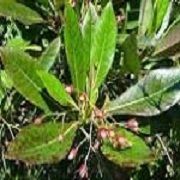
Bois De Rose
Bois de rose, literally 'wood of rose' is given the French name to prevent confusion with actual rosewood. The tree (Aniba rosaeodora) from which the essential oil is distilled originates from tropical Africa and Brazil (where the oil is known as 'oleo de Pau-Rosa').It grows wild and in abundance in the Amazon forests. A similar tree is found in Guyana (where the oil is known as 'Cayenne').The distilleries in Brazil are situated in and around Manaus and the huge quantities of oil produced in the past. Once as much as 150 - 300 tonnes annually. Primarily for Linalool.Principally for the American and European markets have resulted in the deforestation of millions of hectares.The oil is distilled from the bark of the tree. But to obtain it the whole tree is felled. Despite a drop in the exportation of the oil in recent years the environment and climate have been irrevocably changed.Many people are saying that the oil should be completely banned and its usage stopped. Many aromatherapists, however, still sell products containing it.The smell of bois de rose is valued above all. It is woody, mossy, flowery, quite rose-like. It is also a good base, a natural fixative, thicker and more viscous than other essences and is greatly used in perfumery.The principal constituent: Between 70 and 80 per cent of the oil is linalool and this has been much valued by perfumers for many decades. However, linalool can now be reproduced synthetically.So there is no excuse to continue the usage of bois de rose. Obviously the therapeutic properties of a synthetic will not be the same nor is the smell. But it is better than continued pointless destruction.There are other sources of linalool too: the leaves of a plant from Taiwan (called Ho or Shiu) yield an oil with 80 - 90 per cent linalool.Equally other essential oils are rich in linalool: aspic, basil, bergamot, coriander, lavender, lemon, thyme and ylang-ylang. Although the therapeutic properties won't be identical, they can happily serve as a substitute.The Amazon natives used the bark in therapy for its medicinal properties and indeed it has a remarkable action on the skin. Helping wrinkles, stretch marks and scars.It is a great toner, and can be used for ageing skin (with rose, it could rejuvenate) and for skin that has lost its tone or has become flabby after illness or weight loss.Due to Government Regulations natural oil is not steadily available , however Bois de Rose by BMV can effectively replace the natural oil and is also a very interesting product for future creations. Its soft floral odour forms a very nice bridge between the top notes and floral middle notes.
...more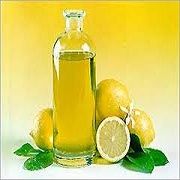
Bergamot
Bergamot orange (Citrus aurantium var. bergamia) is a small, roughly pear-shaped citrus fruit, which grows on small trees known as bergamots. It is a cross between pear lemon and Seville orange or grapefruit. Production of bergamot is mostly limited to the Ioanion, coastal region of the province of Reggio Calabria, South Italy. Where the soil and climatic conditions are very favourable for its cultivation.It is also cultivated in Ivory Coast, Argentina and Brazil. But in no other part of the world does it fructify with the same yield and quality of essence. Bergamot is named after Italian city of Bergamo, in which its oil was first sold. It has become a symbol of the entire region and city.This fruit is not edible and is cultivated for production of its essential oil.The essential oil of bergamot is expressed from the ripe fruit peel and is used extensively in perfumery for its sweet freshness. Bergamot oil is also used for flavouring purposes e.g. Earl Grey tea and the so called althea drops, candy-making.It is also used in aroma therapy to treat depression and also as a digestive aid. Its scent is fruity-sweet with mild spicy note. Bergamot oil is used in production of both female and male perfumes and in most fragrance groups, mainly in top notes.It was a component of the original Eau de Cologne developed in Germany in the 17th century and today is used in different proportions in almost all modern perfumes.During citrus season in France, if you’re lucky, you’ll run across something called a bergamot. They are not brilliant yellow like regular lemons. But a sort of orangey color and when split open they are quite juicy. The flavor is much sweeter than regular lemons. In fact they often call them citrons doux, which translates to “sweet lemons.” Production mostly is limited to the Ionian Sea coastal areas of the province of Reggio di Calabria in Italy, to such an extent that it is a symbol of the entire city.Most of the bergamot comes from a short stretch of land there where the temperature is favourable. It is also cultivated in Cote d'Ivoire.But the quality of the obtained essence is not comparable with the essence produced from the bergamots of Reggio due to the argillite, limestone and alluvial deposits found there.Two of these, Brutieridin and Melitidin, directly inhibit cholesterol biosynthesis in a similar way to statins and they are not found in any other citrus derivatives.One of the finest Top Note materials , the beauty of this oil is unimaginable. Can be used from 0.5% to 10%. An absolute beauty !!! It imparts freshness and diffusion.
...more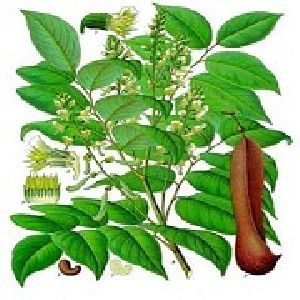
Balsam Peru
The Balsam of Peru, also known and marketed by many other names is a balsam derived from a tree known as Myroxylon. The natural resinous balsam that comes from the trunk of the tree contains a mix of a number of substances that are generally related to cinnamon, vanilla, and clove fragrances and flavorings which is grown in Central America (primarily in El Salvador) and South America.Balsam of Peru is used in food and drink for flavoring. In perfumes and toiletries for fragrance, and in medicine and pharmaceutical items for healing properties. It has a sweet scent. In some instances, Balsam of Peru is listed on the ingredient label of a product by one of its various names.But it may not be required to be listed by its name by mandatory labeling conventions. Balsam of Peru is an aromatic viscous resin obtained by scorching or inflicting V-shaped wounds on the bark of the trunk of the tree.Myroxylon balsamum var. pereirae. The tree has also been introduced to several Pacific islands such as Fiji and to Indonesia and is a potential ecological threat there.About 50 to 64 percent volatile oil is present in Balsam and resin is 20 to 28 percent. The contents of volatile oil are benzoic acid, cinnamic acid esters. It is belived that the main active constituents of resin are benzoic acid and cinnamic acid. About 60% of this oil is cinnamein which is a volatile oil and extracted by the steam distillation. Commercially this is used in the perfume industry, cosmetic industry and soap industry. There are number of chemicals available in Balsam Peru like : alpha-muurolene, benzyl-benzoate,beta-elemene,alpha-copaene,alpha-curcumene,benzyl-cinnamate, benzyl-isoferulate,benzaldehyde,benzoic, benzoic-acids,cadalene,benzyl-ferulate,Alpha-bourbonene, beta-bourbonene,alpha-cadinene,alpha-calacorene,alpha-pinene,caryophyllene,benzyl-alcohol,calamenene. Other containts are cinnamaldehyde, cinnamein, cinnamic-acids, cinnamyl-benzoate, cinnamyl-cinnamate, cis-ocimene, coumarin, d-cadinene, dammaradienone, delta-cadinene, dihydromandelic-acid, eugenol, farnesol, Ferulic-acid, gamma-muurolene, hydroxyhopanone, l-cadinol, methyl-cinnamate, nerolidol, oleanolic-acid, p-cymene, peruresinotannol, peruviol, resin, styrene, sumaresinolic-acid, tannin, toluresinotannol-cinnamate, vanillin, and wax.in care perfumery due to IFRA regulations.However where permitted , BMV has developed a unique product namely Balsam Peru Super Absolute , which is very light in colour and very delicate and soft in odour. Also Balsam Peru NNO a very true reconstitution of the Oil.
...more
AMBRETTE SEED SUPER
The botanical name of Ambrette is Hibiscus abelmoschus L. It is a tropical hibiscus with beautiful bright yellow flowers, and its distinctive seed pods look so similar to okra that the plant is sometimes referred to as “musk okra” or “ornamental okra.” Ambrette is native to India, where it is known as Mushkdana or Kasturi Bhendi. The plant grows to just over a meter in height and is an evergreen shrub. When mature the pods split open to reveal kidney-shaped seeds that have a sweet, flowery, heavy fragrance. Ambrette has long been appreciated in perfumery as one of the few plant oils that contains natural musk compounds, including one named after the plant, ambrettolide. Many synthetic musks are cooked up in laboratories these days, but for people who care about natural products, there is no substitute for the natural. Ambrette oil is expensive and rare because so much work goes into creating it. Unlike some oil crops where the plant leaves are used, Ambrette oil is made only from seeds, which weigh very little and must be carefully gathered. The seeds represent a tiny fraction of the biomass of the entire plant, and only a very small yield of essential oil is achieved -- 0.2% to 0.6% of the total weight of the seeds. In natural perfumery, it can be used in a wide range of compositions including musk bases, amber accords, high class florals, oriental bouquets, incense perfumes, fougere, and new mown hay.Ambrette oil is pale yellow, with an enchanting aroma described variously as sweet, rich, warm musky, fatty and nutty, with floral overtones. After a short period of aging, more complex notes can emerge, such as wine, brandy, fruit, and tobacco. Like all musks, Ambrette is a perfumery base note. It is a powerful, tenacious scent. The main application of Ambrette seed oil is in Perfumes, Tobacco flavoring, Liqueurs and some Fruit flavours. It imparts an exalting effect to fragrance and lends a unique bouquet.However, fragrances need to be matured for about 2-3 weeks for Ambrette seed to show it's beauty.Ambrette seed super is the special product manufactured by BMV Fragrances Pvt. Ltd. Ambrette seed super is meant to be a replacement for the natural product and is available at a fraction of the cost.It has a very persistent Floral - Musky odour and can be used in almost all types of fragrances. At 0.1% level it has the ability to enhance odour perception for all accords. Perfumes especially that are worn on the skin, Ambrette seed super will impart volume and sensuality.
...more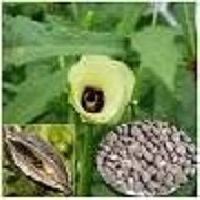
Ambrette Seed
The botanical name of Ambrette is Hibiscus abelmoschus L. It is a tropical hibiscus with beautiful bright yellow flowers, and its distinctive seed pods look so similar to okra that the plant is sometimes referred to as “musk okra” or “ornamental okra.” Ambrette has long been appreciated in perfumery as one of the few plant oils that contains natural musk compounds, including one named after the plant, ambrettolide. Many synthetic musks are cooked up in laboratories these days, but for people who care about natural products, there is no substitute for the natural.
...more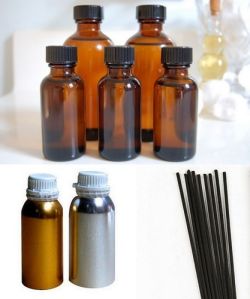
agarbatti fragrance
BMV Fragrances Pvt Ltd primarily to process natural plant products from locally available and imported materials; later on we are producing industrial perfumes, reconstituted essential oils, absolutes etc. under his guidance.He also gathered about 140 research and miscellaneous publications to his credit. agarbatti fragrance and We produce some of naturals especially for captive use.
...more
Body Massage Oil
Be first to Rate
Rate ThisOpening Hours